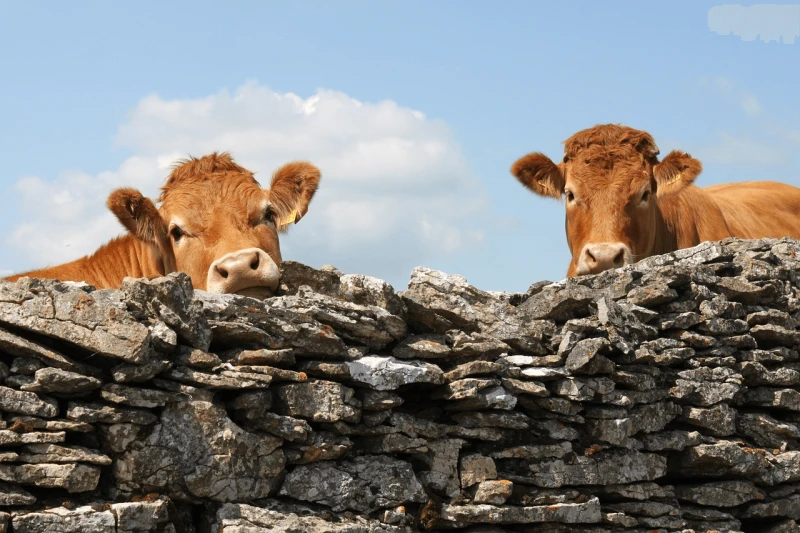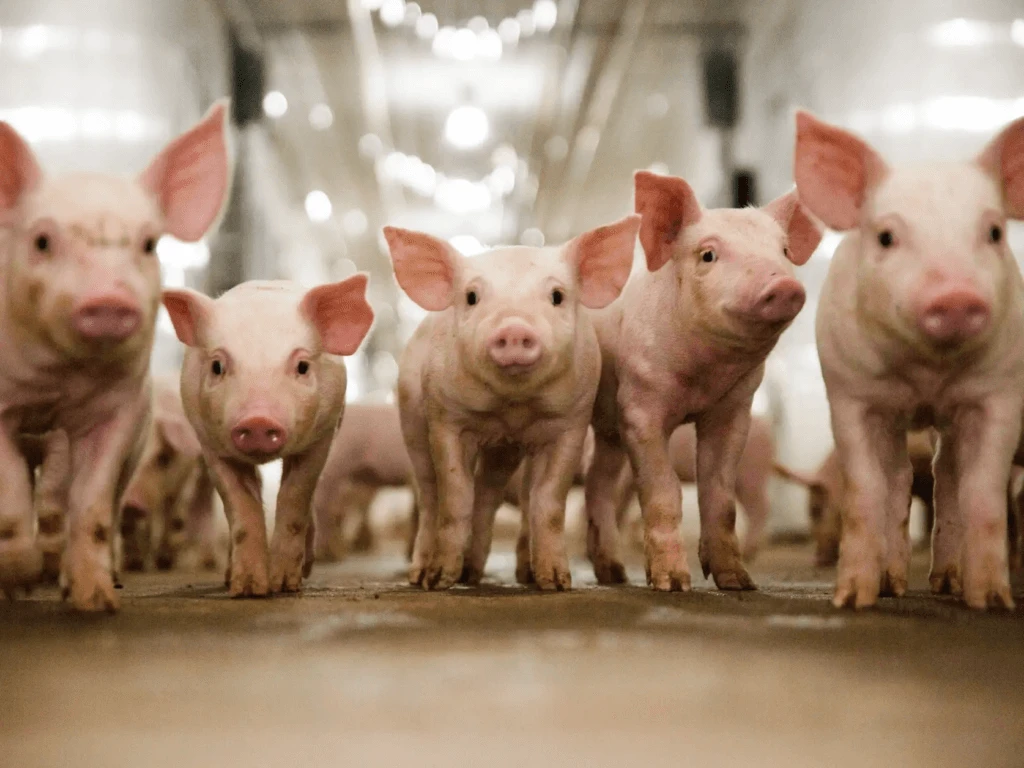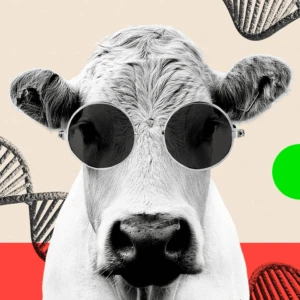Viewpoint: As the UK edges closer to limiting regulations on gene-edited crops, concerns mount that precision breeding of farm animals will be left behind
Viewpoint: As the UK edges closer to limiting regulations on gene-edited crops, concerns mount that precision breeding of farm animals will be left behind


It is encouraging that Defra food security minister Daniel Zeichner has since confirmed that the Government will introduce the necessary legislation [to implement the Genetic Technology (Precision Breeding) Act 2023] “as soon as Parliamentary time allows”, emphasising as he did so the prospect not only of more secure, sustainable, and climate resilient food production but also the potential wealth creation opportunities on offer for British science.
But, disappointingly from my perspective, Mr Zeichner’s announcement related only to the secondary legislation needed to implement the Precision Breeding Act’s provisions for plants. It was silent on the Government’s plans [about] farmed animals, which were also covered by the original Act.
This is a serious omission. Precision breeding technologies such as gene editing offer enormous potential to accelerate the delivery of health and welfare, environmental and productivity benefits in farmed animals, for example through the development of genetic resistance to previously intractable disease problems, such as porcine reproductive and respiratory syndrome (PRRS) in pigs, avian influenza in poultry and bovine viral [diarrhea] (BVD) in cattle.
While the timetable for implementing the Precision Breeding Act for farmed animals may be behind that for plants, as requirements for an animal welfare declaration and the creation of a new welfare advisory body are established, recent global developments [concerning] the spread of livestock disease highlight the need to act sooner rather than later.
With a virulent strain of PRRS wiping out pig herds in Spain, African Swine Fever on the march north through Europe, and bird flu virus detected in both dairy cattle and their milk in the US, the importance of enabling all potential solutions as soon as possible, including precision breeding, cannot be overstated.
A clue to the new Labour Government’s reticence on this issue may lie in the politics of animal welfare, where campaigning organisations such as the RSPCA have simply declared that these breeding techniques represent a ‘backward step’. Compassion in World Farming [is] a little more nuanced in their stance, for example supporting the ‘ethical’ use of precision breeding to produce female-only chicks in the egg industry to avoid the culling of billions of unwanted male chicks each year.
But even the British Veterinary Association (BVA), which recently issued its policy position on gene editing, has called for additional restrictions [that] would only allow the use of gene editing where it delivers demonstrable benefits for animal health and welfare.
By demanding a higher bar for precision breeding, and requiring demonstrable benefits for health and welfare rather than no adverse effects relative to conventional breeding, the BVA’s stance may discourage UK-based development of a technology [that] not only promises to tackle the serious disease problems discussed above, but which can also accelerate the delivery of other attributes which are key to sustainable food production.

For example, New Scientist recently reported that the Pig Improvement Company (PIC) has quantified through a peer-reviewed process that its improved genetics achieve a 7.7% reduction in the greenhouse gas emissions associated with a pig’s full life cycle compared to the European industry average.
Similarly, poultry breeder Aviagen told a meeting of the APPG on Science and Technology in Agriculture earlier [in 2024] that today’s broiler has a 55% lower carbon footprint than the equivalent bird in the 1970s. By 2030 that will be reduced by a further 10% as a result of improved genetics.
The BVA policy is particularly disappointing because it runs the risk of perpetuating and reinforcing outdated perceptions of livestock breeding. In the past, there have undoubtedly been excesses brought about through selective breeding of farmed animals which have resulted in poorer welfare outcomes. Double muscling in some breeds of cattle leading to calving difficulties is one of the most frequently cited. But these examples are almost exclusively consigned to the history books, and such developments are now prohibited in law through existing animal welfare legislation. The Welfare of Farmed Animals (England) Regulations 2007, for example, state that:
“Natural or artificial breeding or breeding procedures which cause, or are likely to cause, suffering or injury to any of the animals concerned, must not be practised … Animals may only be kept for farming purposes if it can reasonably be expected, [based on] their genotype or phenotype, that they can be kept without any detrimental effect on their health or welfare.”
Modern breeding programmes have for at least the past two decades been much more focused on delivering balanced outcomes in terms of productivity, animal health and welfare, and environmental impact.
So, the same APPG meeting earlier this year heard how modern broiler breeding programmes are directly targeting welfare factors, leading to dramatic improvements in traits such as leg strength and cardiovascular function. Breeders use a range of technologies to refine the selection process, from whole-body CAT scanning to check skeletal strength and bone density, to UK-developed innovations such as imaging, AI, and machine learning to identify clinical or sub-clinical developmental issues. Health and welfare account for around 35-40% of the breeding goals in modern poultry selection programmes.
MPs and Peers also heard from Moy Park about their state-of-the-art ‘zero carbon’ Beech Farm poultry unit in Lincolnshire, which uses renewable technologies such as ground source heat pumps to generate heating, heat exchanger systems to reduce overall heat usage, rainwater harvesting, and solar technology to cut Scope 1 and Scope 2 emissions by up to 100%.
And 2 Sisters Food Group described how they are using advanced imaging and AI technology to track individual birds’ mobility, growth rates, and health status, so providing early warning of potential welfare issues. The modern reality is that the application of science and innovation in breeding and livestock production systems is helping to deliver better outcomes for animal health, welfare, and the environment, not worse.
Put simply, healthier animals are more productive animals. The greatest cause of morbidity, mortality, and poor welfare is disease. Technologies such as gene editing promise much greater potential to address previously intractable disease challenges for which there are currently no effective vaccines or treatments and to accelerate the delivery of environmental improvements, such as a lower carbon footprint.

I am proud that PIC and Aviagen are both UK-based companies, supplying improved genetics to livestock producers around the world. But as Professor Bruce Whitelaw, director of the Roslin Institute in Edinburgh, recently told Pallab Ghosh at the BBC:
“We are world leaders in the technology and sitting at the top table in terms of developing it. But if we don’t have the legislation to do that, then our credentials to sit there will slowly wither away as we lose [the] investment, scientific talent, and the boost to our economy to other countries.”
We hope that Mr Zeichner and his fellow Ministers are listening, and are willing to engage further in implementing the Precision Breeding Act to bring the benefits of these technologies to animal production.
Read the original post here

 | Videos | More... |

Video: Nuclear energy will destroy us? Global warming is an existential threat? Chemicals are massacring bees? Donate to the Green Industrial Complex!
 | Bees & Pollinators | More... |

GLP podcast: Science journalism is a mess. Here’s how to fix it

Mosquito massacre: Can we safely tackle malaria with a CRISPR gene drive?

Are we facing an ‘Insect Apocalypse’ caused by ‘intensive, industrial’ farming and agricultural chemicals? The media say yes; Science says ‘no’
 | Infographics | More... |

Infographic: Global regulatory and health research agencies on whether glyphosate causes cancer
 | GMO FAQs | More... |

Why is there controversy over GMO foods but not GMO drugs?

How are GMOs labeled around the world?

How does genetic engineering differ from conventional breeding?
 | GLP Profiles | More... |

Alex Jones: Right-wing conspiracy theorist stokes fear of GMOs, pesticides to sell ‘health supplements’




 Viewpoint — Fact checking MAHA mythmakers: How wellness influencers and RFK, Jr. undermine American science and health
Viewpoint — Fact checking MAHA mythmakers: How wellness influencers and RFK, Jr. undermine American science and health Viewpoint: Video — Big Solar is gobbling up productive agricultural land and hurting farmers yet providing little energy or sustainabilty gains
Viewpoint: Video — Big Solar is gobbling up productive agricultural land and hurting farmers yet providing little energy or sustainabilty gains Fighting deforestation with CO2: Biotechnology breakthrough creates sustainable palm oil alternative for cosmetics
Fighting deforestation with CO2: Biotechnology breakthrough creates sustainable palm oil alternative for cosmetics Trust issues: What happens when therapists use ChatGPT?
Trust issues: What happens when therapists use ChatGPT? 30-year-old tomato line shows genetic resistance to devastating virus
30-year-old tomato line shows genetic resistance to devastating virus California, Washington, Oregon forge immunization alliance to safeguard vaccine access against federal undermining
California, Washington, Oregon forge immunization alliance to safeguard vaccine access against federal undermining The free-range chicken dilemma: Better for birds, but with substantial costs
The free-range chicken dilemma: Better for birds, but with substantial costs ‘You have to treat the brain first’: Rethinking chronic pain with Sanjay Gupta
‘You have to treat the brain first’: Rethinking chronic pain with Sanjay Gupta
